The history behind NYC’s water towers
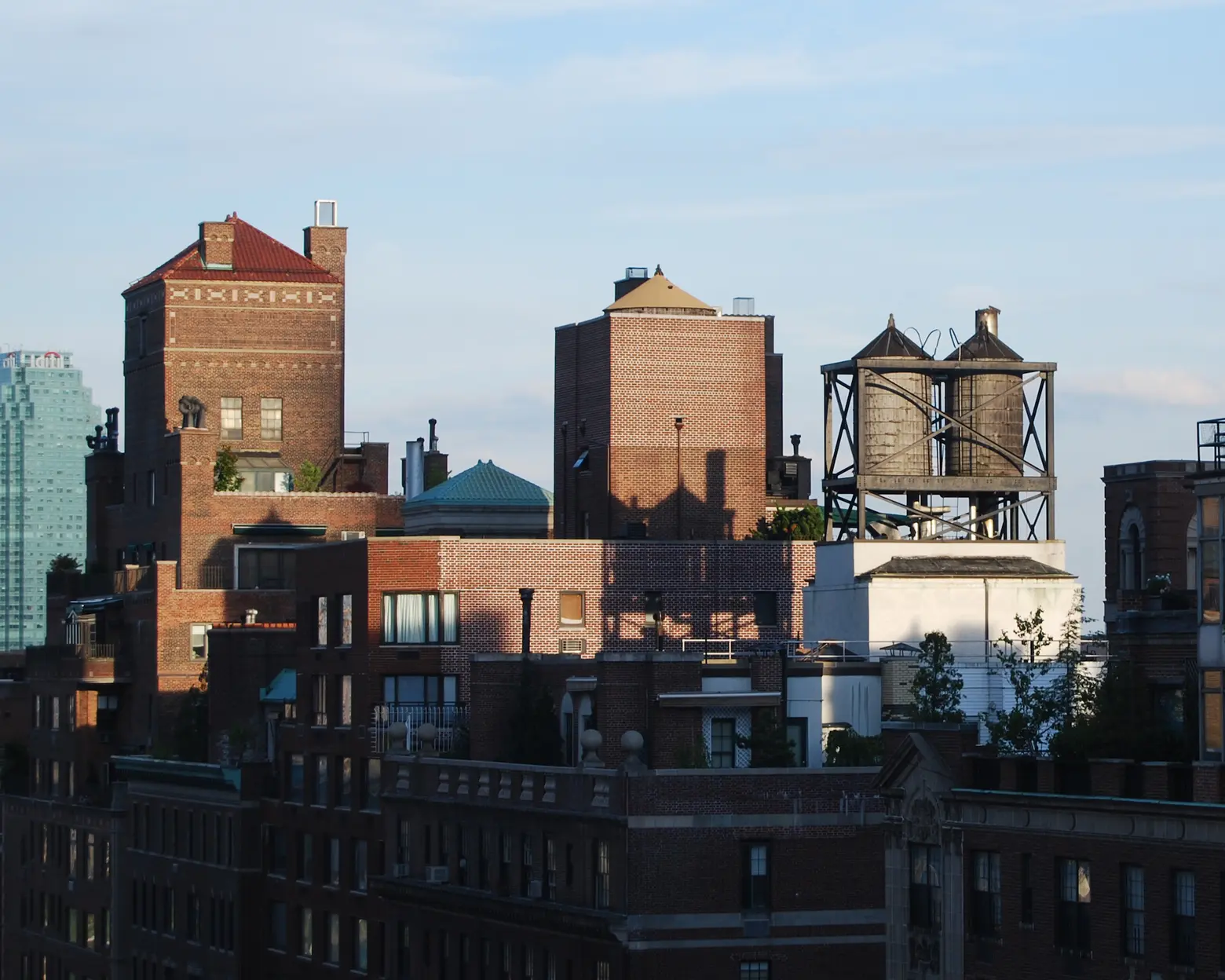
Photo of water towers on East 57th Street via Wikimedia
For over 100 years, water towers have been a seamless part of New York City’s skyline. So seamless, in fact, they often go unnoticed, usually overshadowed by their glassy supertall neighbors. While these wooden relics look like a thing of the past, the same water pumping structure is still built today, originating from just three family-run companies, two of which have been operating for nearly this entire century-long history. With up to 17,000 water tanks scattered throughout NYC, 6sqft decided to explore these icons, from their history and construction to modern projects that are bringing the structures into the mainstream.
 Image via 6sqft
Image via 6sqft
Water tank fundamentals
When the Dutch settled New York City they found an island rich with waterways and natural streams. However, as the city’s industrial sector grew, so did its polluted waters. With no proper drainage system, standing pools of grime would form in the streets. The harm of these unsanitary conditions was not revealed until a group of wealthy New Yorkers formed the Citizens Association of New York to focus on public health reform. After the group’s survey revealed dangerously unhygienic conditions, a campaign was launched to improve the quality of water and people’s access to it.
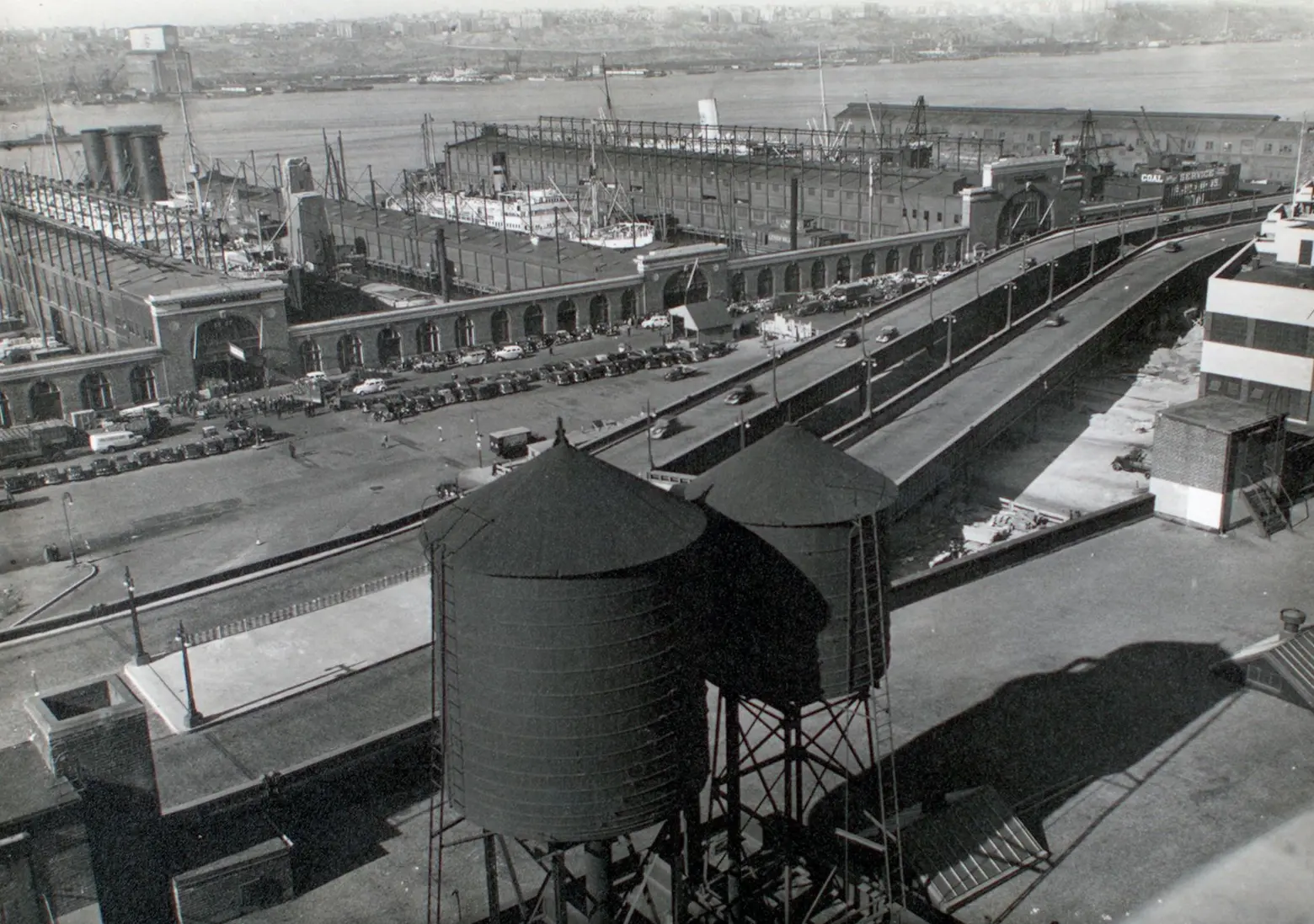
The Miriam and Ira D. Wallach Division of Art, Prints and Photographs: Photography Collection, The New York Public Library. (1937). West Side Highway and Piers 95-96-97-98, looking west from roof of 619 West 54th Street, Manhattan. NYPL Digital Collection.
The Department of Public Works was later founded in 1870 to improve the drainage system and access to water. During the 1880s, indoor plumbing began replacing well-drawn water, and roughly 50 years later, top-floor storage tanks started popping up all over the city. Tanks were placed on rooftops because the local water pressure was too weak to raise water to upper levels. When construction started to grow taller, the city required that buildings with six or more stories be equipped with a rooftop tank with a pump.
About 5,000 to 10,000 gallons of water can be stored in the tanks. The upper layer of water is used for everyday use, with water at the bottom reserved for emergencies. When the water drops below a certain level, an electric pump is triggered and the tank refills. Gravity sends water to pipes throughout the building from the roof. A water tank usually lasts roughly 30-35 years. It can be built within 24 hours and takes just two or three hours to fill with water.
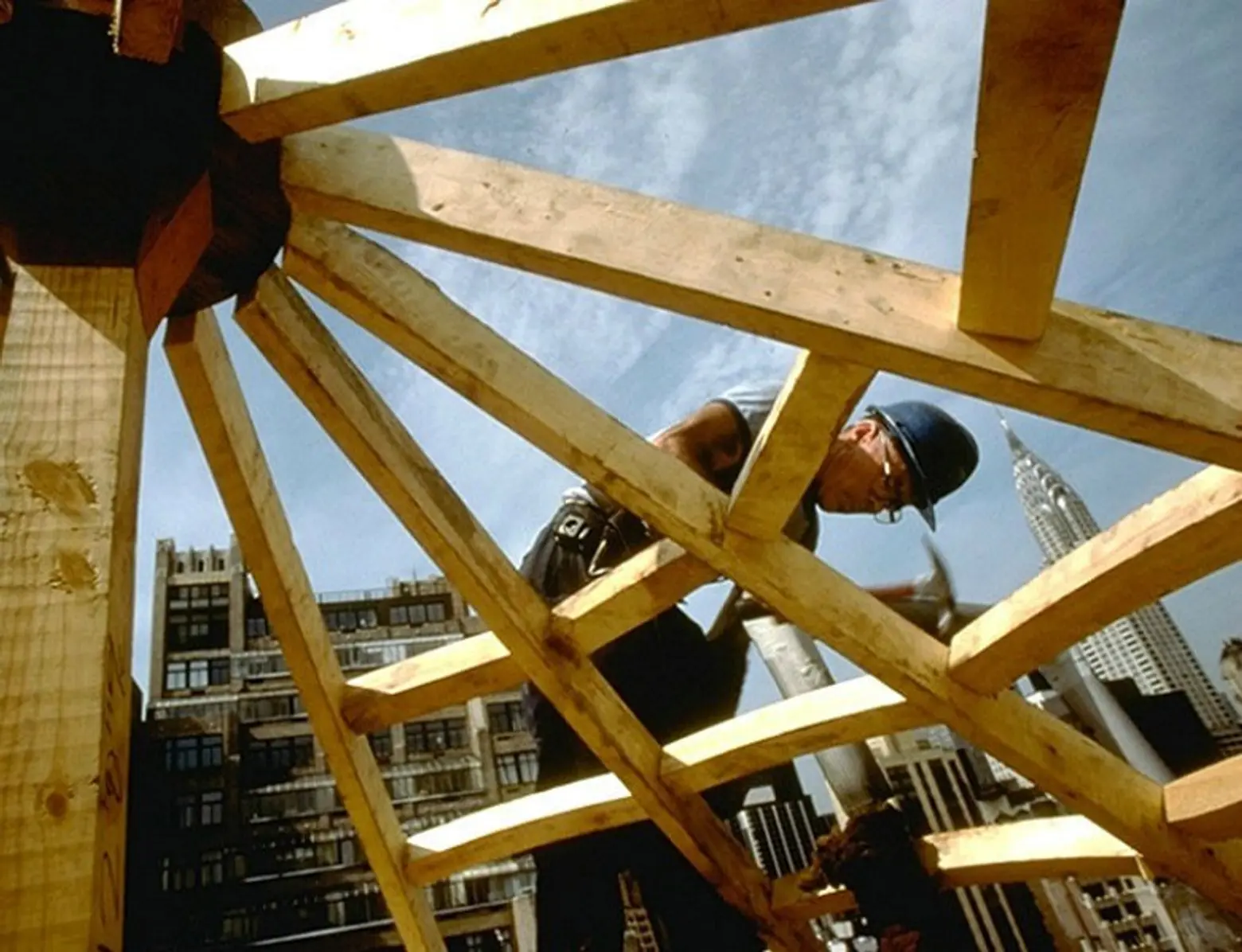 Photo via Rosenwach Tank Company
Photo via Rosenwach Tank Company
It’s a family business
Only three companies construct NYC’s wooden water tanks: Rosenwach Tank Company, Isseks Brothers, and American Pipe and Tank. All three are family-run, operating for at least three generations. The Rosenwach Tank Company, the best known of the group, first began on the Lower East Side in 1866 by barrel maker William Dalton, who later hired Polish immigrant Harris Rosenwach. After Dalton died, Rosenwach bought the company for $55 and, along with his family, expanded services over the decades to include historic building preservation, outdoor site furnishings, and new water technologies. Rosenwach says it’s the only company that mills its own quality wood tanks in New York City.
Isseks Brothers opened in 1890 and are now overseen by David Hochhauser, his brother, and sister. As Scott Hochhauser told the NY Times, there have been few changes to their water tank construction process over the past century. Despite this, a lot of people are curious about the tanks. “Some are interested in the history; a lot of artists like them, for the beauty; and there are people who are into the mechanics of them. But I don’t get too many people call up to say, ‘Hey, tell me about those steel tanks.’”
According to their website, American Pipe and Tank is all about “sons apprenticing with their fathers,” proudly claiming their business as being generational. While the company has since expanded from its original services, the American Pipe & Tank Lining Co. remains the group’s oldest. They prepare, install and repair hot water tanks and fuel oil tanks in the New York City area.
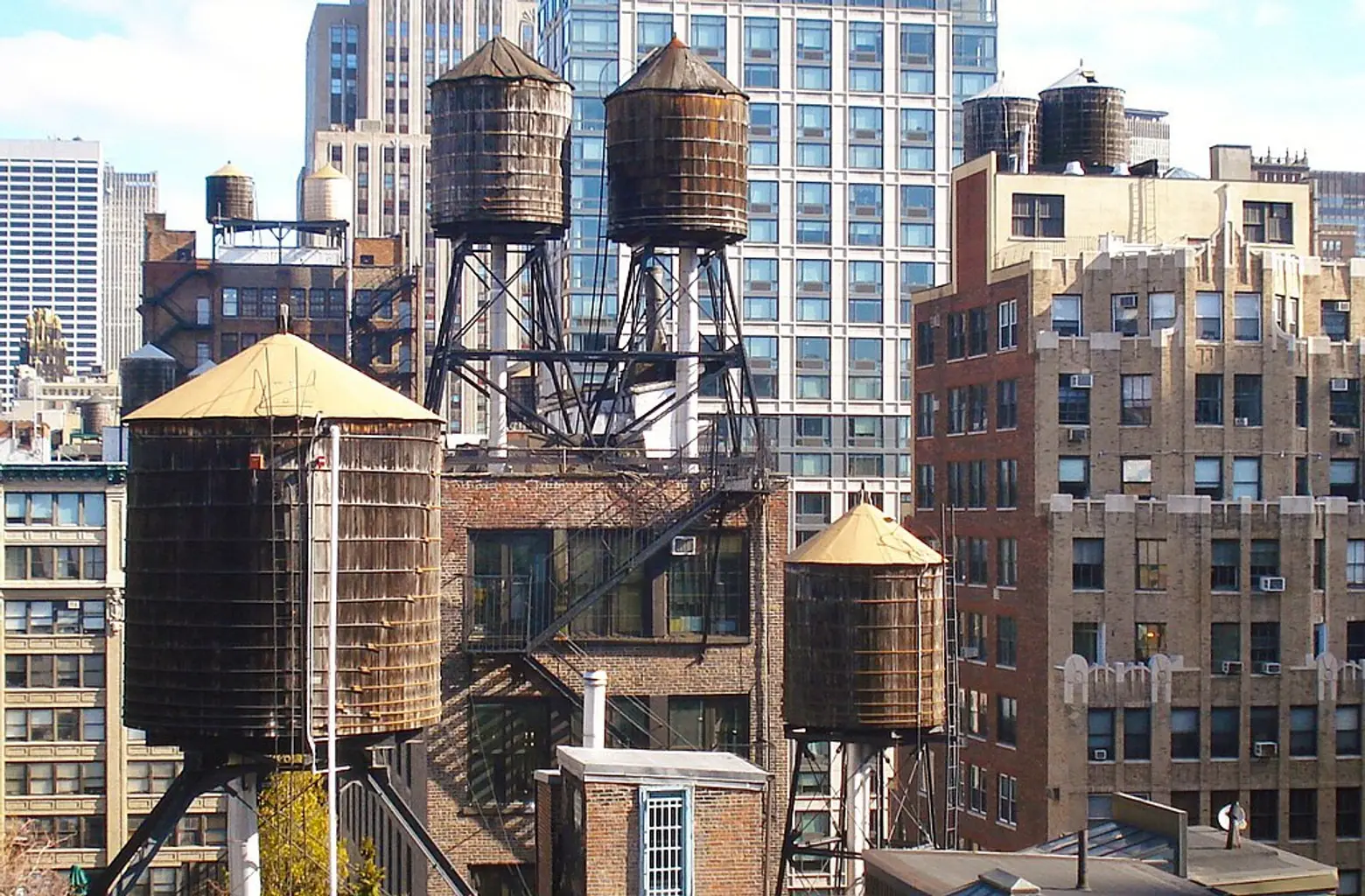
Photo by Phil Bartle on Flickr
Why wood?
While the hand-made wooden barrels make us sentimental, they’re actually the most effective for the water tank’s job. Even the city’s most luxurious buildings, like 15 Central Park West, for example, have wooden tanks. Rosenwach uses Western cedar for their tanks, a cheap, lightweight material.
Plus, wood is much better at moderating temperature than steel tanks. Steel tanks, while sometimes used, are more expensive, require more maintenance, and take more time to build. A wooden tank that can hold 10,000 gallons of water costs roughly $30,000. A steel tank of the same size can cost up to $120,000. And water stored in the wood will not freeze in the winter and stays cool during the hot summer months.
Eventually, the wood will rot and will need to be replaced after 30-35 years. Kenny Lewis, a Rosenwach foreman, explained the process of the tank infrastructure to amNY: “When you first set them up they leak, but when they fill [with water], the wood expands and becomes watertight. Then, it’s like a giant toilet. When people use the water, the level goes down. All ballcock lets more in, and that water is pumped from the basement.”
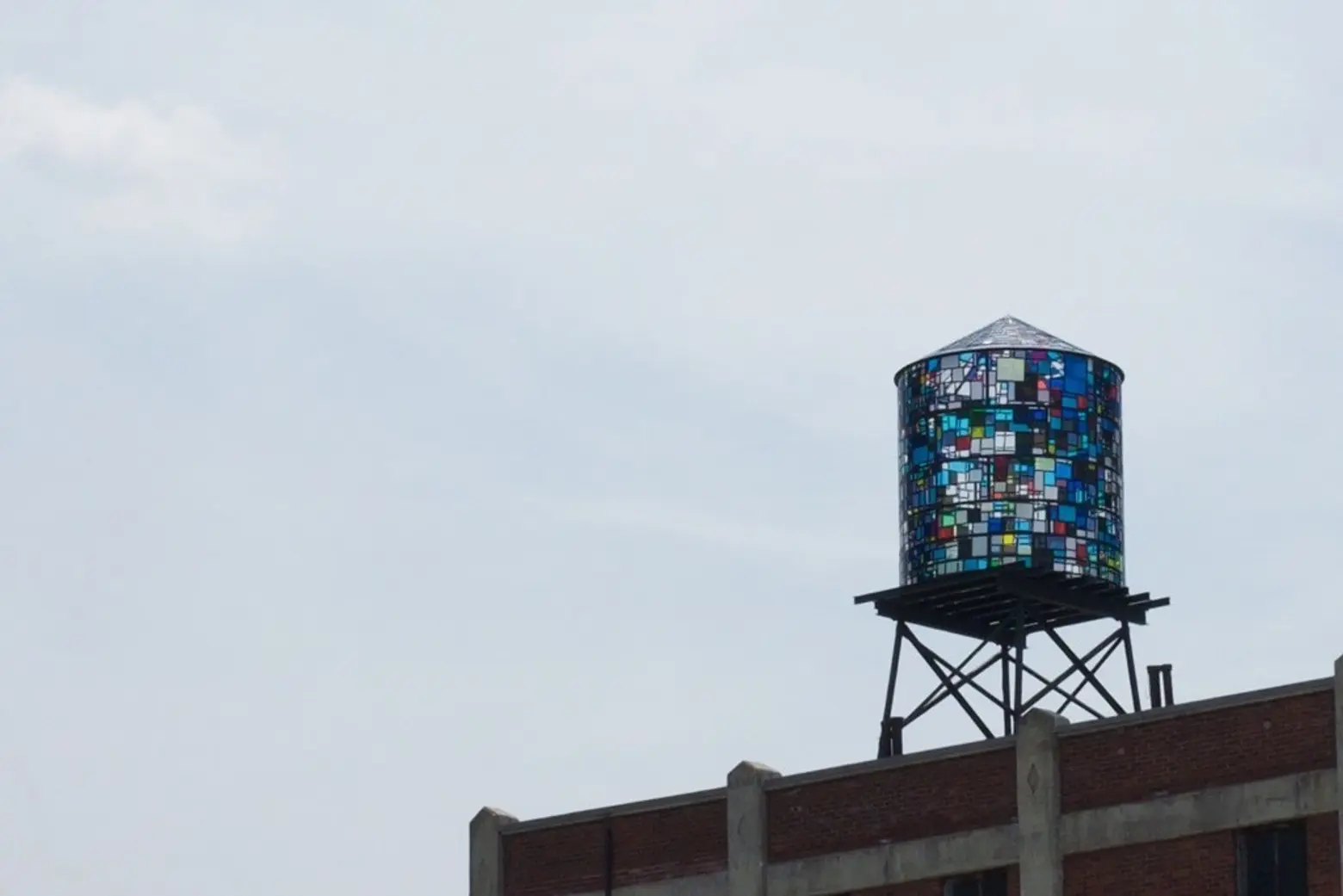
Photo by Peter Burka on Flickr
Turning a basic need into an art form
As part of a 2014 Water Tank Project, water tanks became an awareness campaign through art. To call attention to the global water crisis, the project enlisted support from artists and students from NYC public schools to create art on water towers.
In addition to the world of art and public advocacy, water tanks have been seen in the architecture and real estate world. A steel water tank was converted into a fully functional rooftop cottage in Greenwich Village. The tank-turned-cottage sits above a two-bedroom condominium and sold for roughly $3.5 million.
In 2012, artist Tom Fruin created a monumental sculpture of a water tower decked out in colorful plexiglass and steel. Situated at 20 Jay Street in Dumbo, the sculpture was part of Fruin’s “Icon” series.
Editor’s note: The original version of this story was published on July 12, 2017, and has since been updated.
RELATED:
Interested in similar content?
Leave a reply
Your email address will not be published.
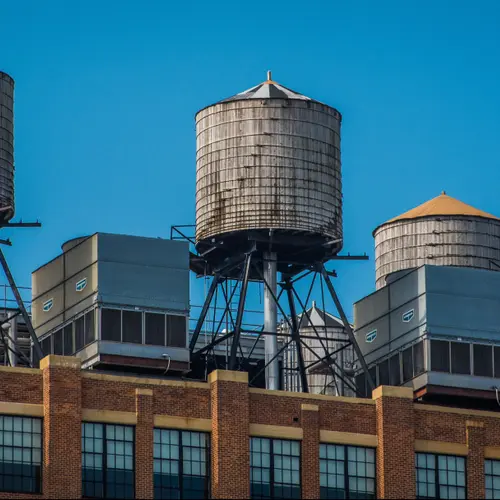

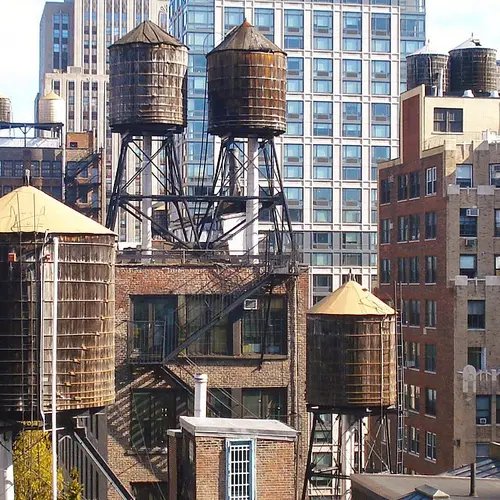
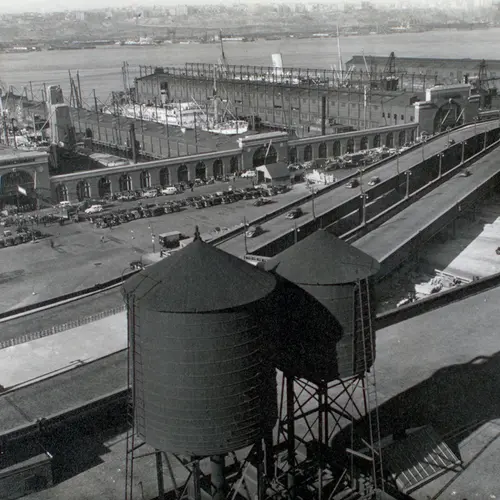

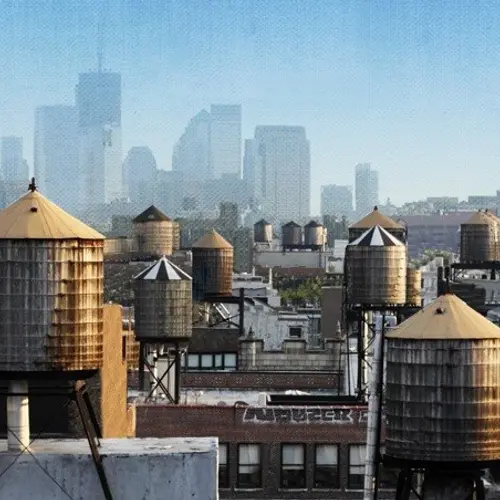
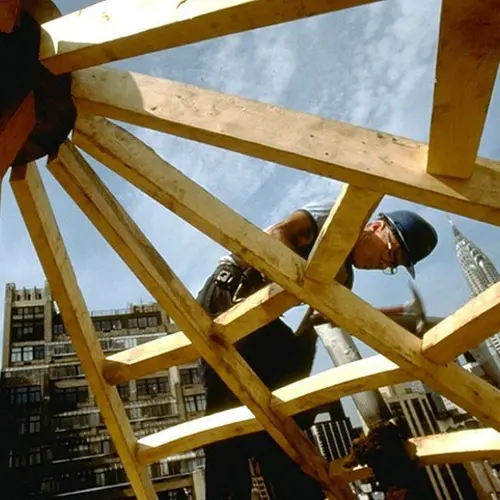
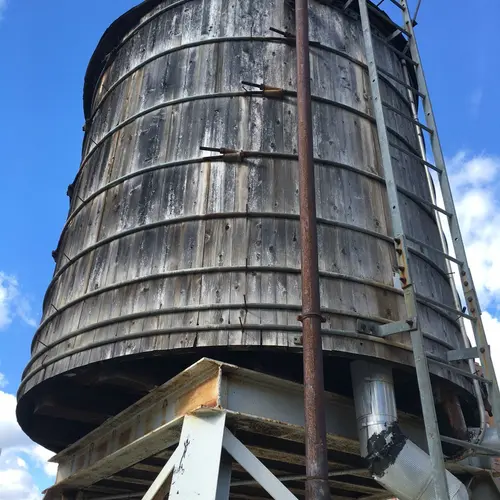
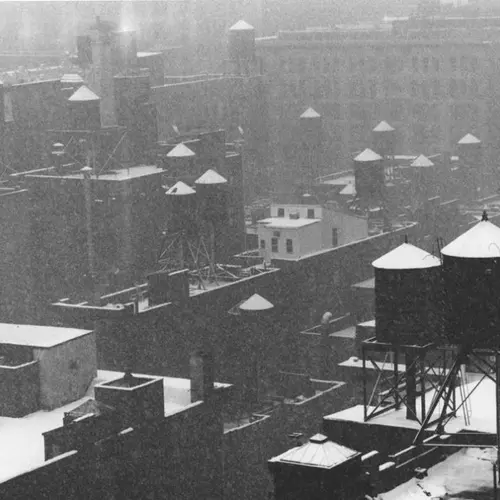
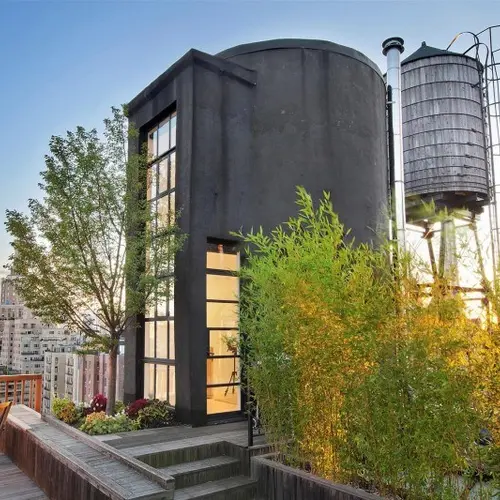
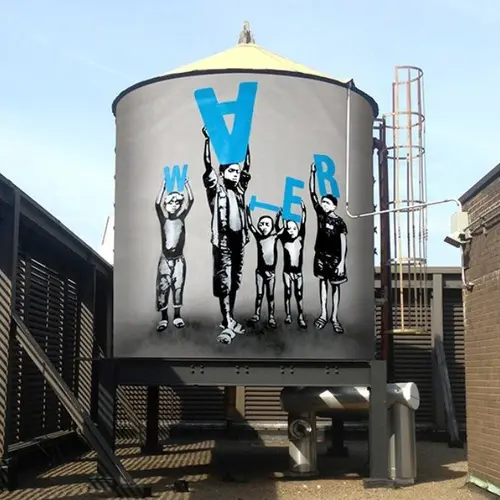
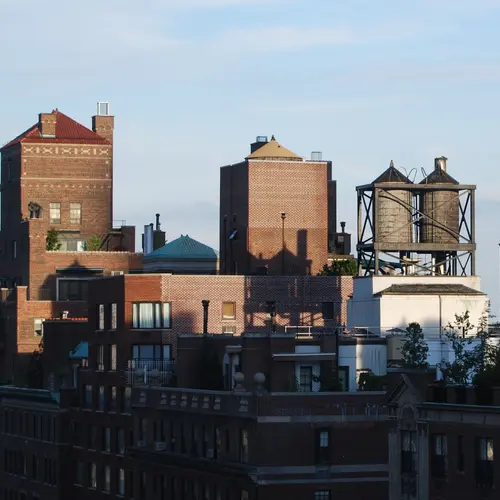
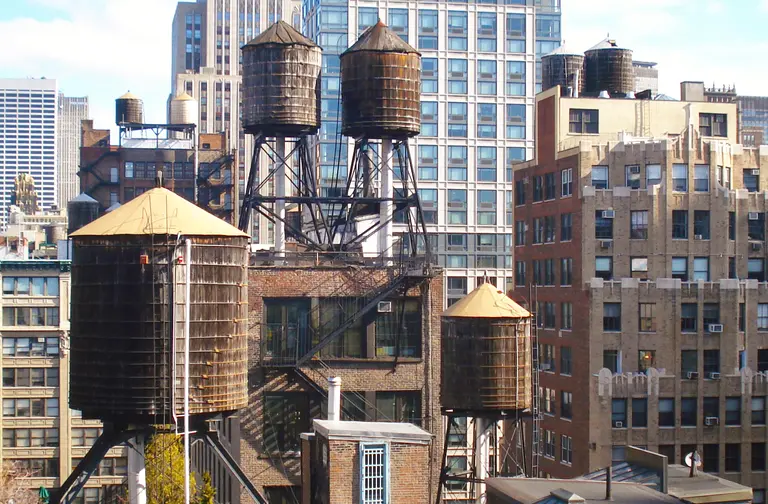
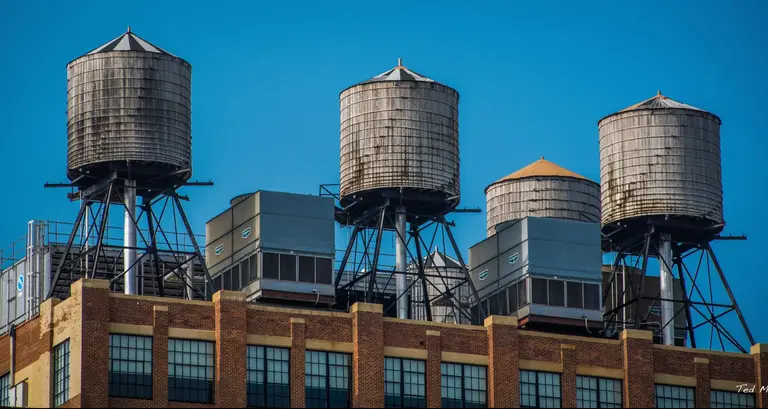



























There’s a multi-color glass(?) water tower on the Brooklyn waterfront just West of the Brooklyn Bridge
My collection of WT in NYC: http://mariobucolo.info/wt/
A common feature on wooden tanks is the bands of ribbing (straps) that hold the wood together; but not just the ribbing itself. It’s the spacing. Notice how the ribbings get closer together the closer you get to the tank’s bottom. That’s due to the water pressure at the bottom being much greater than at the top, thus requiring much more support in keeping the wood together.
I worked for Federal Pump & Repair co. in Brooklyn. Working on many of these. Nice memories.
great photos. love the black & white shots. Any prints available for sale?